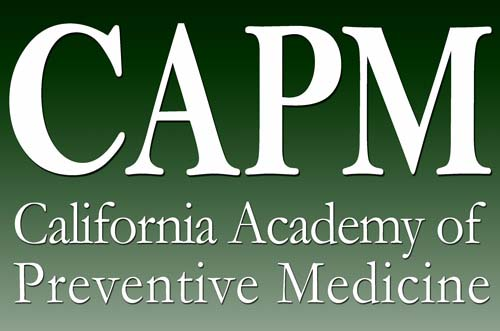Bringing Together California’s Medical Leaders of Prevention and Public Health
Ronald P. Hattis, MD, MPH, Treasurer and Past-President, CAPM
CAPM has taken on an exciting project that may soon bring together leaders in Preventive Medicine throughout California, to deal with issues of concern to the specialty. A little history may help to introduce this idea.
Until 2001, the California Medical Association (CMA) operated a more expansive set of activities than it does today. Every recognized medical specialty had a scientific advisory panel, which included specialty society leaders and the specialty chairs or their designees from California’s medical schools. Preventive Medicine and Public Health, as a recognized medical specialty represented at CMA, had its own scientific advisory panel. The panels met in person annually at CMA expense, and evaluated specialty-specific issues for CMA. The elected chairs of the panels constituted CMA’s Council on Scientific Affairs.
In that era, CMA published the Western Journal of Medicine, and each specialty’s scientific advisory panel (including the one for Preventive Medicine and Public Health) also edited manuscripts for and took turns presenting a feature of that journal called “Epitomes.” These consisted of brief summaries of new specialty-specific advances and pearls of wisdom. Periodically, there would thus be “Epitomes of Preventive Medicine and Public Health.” CMA also used to run an annual Scientific Assembly in conjunction with its annual House of Delegates, and a further task for the panels was to develop the continuing education curricula for that conference, in their respective specialties.

Today, the scientific advisory panels and the Scientific Assembly are gone, part of the history of a past era. So is the Western Journal of Medicine, which was sold to the British Medical Journal Group in 1998. Its “Epitomes” were soon discontinued, and the entire journal folded due to economic unviability in 2002. The Council on Scientific and Clinical Affairs exists and has an important role within CMA, but it consists of one appointed rather than elected member from each specialty.
I had the privilege of being the last elected Chair of the Scientific Advisory Panel on Preventive Medicine and Public Health, serving from 1997 to 2001. Our panel was unique, because in addition to medical schools representatives, we invited representation from the state’s four schools of public health. Since not every medical school had anything resembling a department of preventive medicine, CMA staff and I approached the Deans for permission to involve appropriate medical leaders in prevention and public health. Some participated by phone, but a few took the trouble to travel to the meetings.
I took advantage of the unique opportunity of having such a collection of medical luminaries in prevention and public health together at one time, to place on the agendas issues beyond the CMA mandates. We discussed academic issues related to training physicians in preventive medicine and public health, specialty-specific challenges for Preventive Medicine, and the needs of the state’s public health system from a medical perspective. We exchanged information on what was happening and being researched in prevention, at the various universities and around the state.
It has been 13 years since such an entity has existed, and I miss the scope and unity, and what it was capable of addressing. I think that with the changes brought by the Affordable Care Act and the cutbacks in public funding for public health and for Preventive Medicine residencies, such a leadership group is needed now more than ever.
The California Academy of Preventive Medicine is sponsoring an attempt to resurrect such meetings by conference call, and to address today’s new set of issues and challenges. We have enlisted the help of Dr. Mark Horton, the most recent past-Director of the California Department of Public Health (and the first director after it split off from the Department of Health Services), in implementing this vision, and it is expected that he will chair the first meetings.
Although we lack the funding once provided by CMA, we have the flexibility to build a new council as we want and need it. To represent physicians in prevention and public health as completely as possible, the California Department of Public Health, the California Department of Healthcare Services, and the Health Officers Association of California will be invited along with the academic institutions. CAPM representatives will attempt to represent diverse modes of Preventive Medicine practice, including non-governmental and non-academic settings.
We also have an opportunity to more fully engage the prevention-oriented component of California’s osteopathic medical community of over 6,000 physicians, many of whose members belong to the Osteopathic Physicians and Surgeons of California (OPSC) but not to CMA. Both osteopathic medical schools in California will be invited to participate.
As I write this, most California universities with schools of medicine or public health have assigned appropriate representatives, and we look forward to getting started on May 6, 2014 with the first call. We have already obtained many ideas for agenda topics. Additional suggestions may be sent to info@capreventivemed.org.


This site is protected by reCAPTCHA and the Google Privacy Policy and Terms of Service apply.